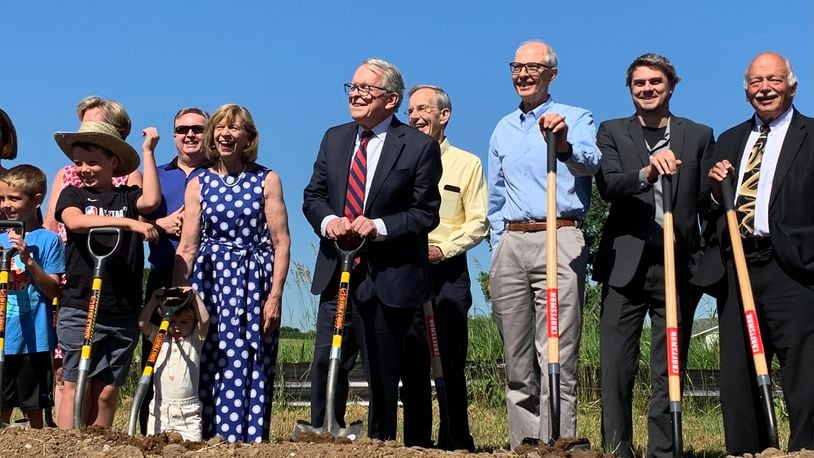Inside, visitors will find three floors of exhibits, a theater area, a living stream, and a gallery. The displays will honor the Shawnee tribes of the past and allow present-day members of the Shawnee nation to share their stories.
“It’s a marvelous thing. It’s a wonderful accomplishment, not just for the Shawnees, but for absolutely everyone in Ohio,” said Eastern Shawnee Chief Glenna Wallace. “Many exciting things are happening in Ohio in reference to Native Americans, and that greatly pleases us.”
The museum content, as well as the design of the facility, was created by and with members of the Shawnee nation from day one, Wallace said.
“We’ve often said that we would prefer that people talk with us rather than about us. And this is a prime example,” she said. “You can’t begin to stress how important it is. Even though we were removed from here, it wasn’t our wishes. We love our state of Oklahoma, don’t misunderstand that. We love the United States. But Ohio will always be special to us. We would like those stories told.”
The Great Council State Park area off U.S. 68 in Xenia Twp. was once home to Oldtown, one of the largest-known Shawnee settlements in Ohio. It had a population around 1,000 people between 1777 and 1780. The site also is near the birthplace of Tecumseh, the 18th century Shawnee chief, warrior and orator.
The park will be at the site of the former Tecumseh Motel, just south of Brush Row Road.
Most American Indians, including the Shawnee Tribe that lived throughout much of southern Ohio, were forced to leave Ohio during the Indian removals of the 1800s. Many landed in Oklahoma, where the Eastern Shawnee are now headquartered. Today there are no federally recognized Native American tribes in Ohio.
Their stories intersect with that of historic American and European settlers like Daniel Boone, who was held captive in Oldtown.
“This is an exciting step toward preserving an important piece of Ohio’s history,” DeWine said. “This project gives us the unique opportunity to connect future generations with the past, while protecting the legacy of the Shawnee and inviting them to share their story.”
The center is expected to open in 2023.
About the Author
